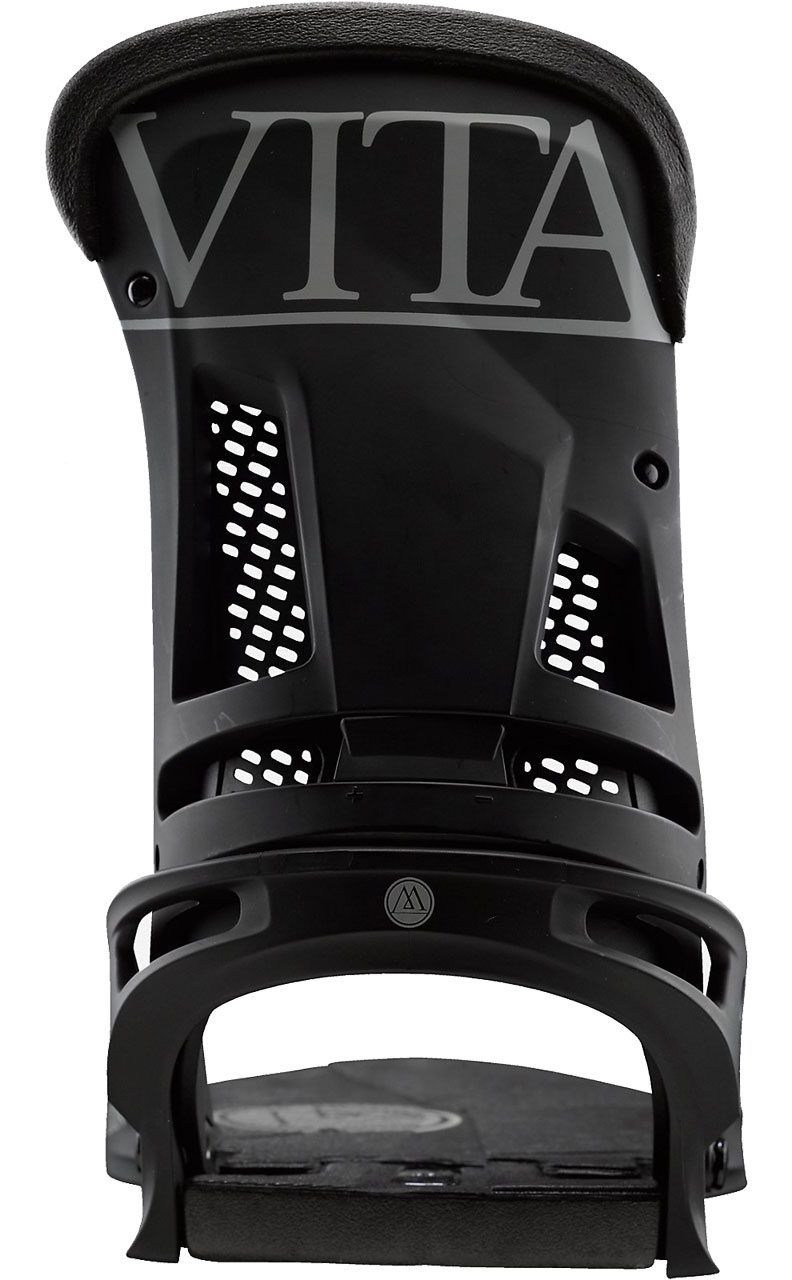Hi-backs
One great modification to the Malavita is a forward lean adjuster. The previous forward lean adjuster required flipping down a lever and sliding it up or down to make adjustments. It would often freeze or become stuck, and almost always required the removal of gloves to change.
 All that is required to change the forward lean on the new Malavita is spinning a piece of the hi-back that’s embedded near the heel, no tools needed. It has eliminated cold fingers and makes adjusting the hi-back much quicker and precise. When hitting jumps or dropping into the pipe, I could quickly add forward lean and dial it back to zero when lining up for the jib line.
All that is required to change the forward lean on the new Malavita is spinning a piece of the hi-back that’s embedded near the heel, no tools needed. It has eliminated cold fingers and makes adjusting the hi-back much quicker and precise. When hitting jumps or dropping into the pipe, I could quickly add forward lean and dial it back to zero when lining up for the jib line.
Unlike a straight, vertical hi-back, the Malavita’s angle inward toward the center of the board, with the natural angle of the rider’s legs. This supposedly gives the rider a more natural stance compared to bindings with identical left and right foot hi-backs. This canted design, in my experience, improved the comfort of the binding and provided it with a more natural feel.
The straps also contoured perfectly to the shape of my boot, never once pinching my foot. Additionally, the ratchets used for the Malavitas were ultra fast and glided easily; never freezing or becoming stuck.
Mounting
My only complaint about the Malavita is that, when riding the Burton Easy Livin (EL) board, the heel of the binding would frequently rise off the surface of the board. (Note this is different than the heel lift mentioned above, where the heel of the boot rises off the binding).
As I mentioned in my Easy Livin review, the EL has Burton’s Channel mounting system, a single track under each binding that runs parallel to the length of the board. Inserts in these tracks attach to the binding, but at only two points in the center of the binding, instead of by the average four-hole pattern in other boards. When flexing the board hard or leaning into sharp carves, I could often feel the heel of my entire binding lift up to a half inch of the board. I did not have this problem when riding boards with a four-hole pattern, such as the Gnu Riders Choice, nor did my screws come loose when using a traditional style baseplate.
Burton makes it clear that the Channel is compatible with all their binding formats (and all other major binding brands), including Re:Flex—and it is. But for aggressive riders, I would not recommend the use of the Re:Flex Malavita with the Channel system. Instead, I would recommend either using the Malavita EST’s (Burton’s binding mounting system specifically designed for use with the Channel) or a board with the traditional four-hole pattern.
Responsiveness
Because the extent of my riding was at Windells this summer, I did not have the opportunity to take the Malavita into steep terrain or areas that would push the binding’s response to its limits. Burton calls the Malavita a “6” on a 1-to-10 scale of responsiveness; after riding them on jumps, rails, and in the pipe, I would agree with that statement. Being a mid-flex binding, it was stable enough to support me if I landed heel heavy, but soft enough to flex while chattering through brake bumps in the landings of features.
Bottom Line
The Malavita was designed and marketed as a top-tier park binding, and the park is exactly where it excels. It has some of the softest straps I have ridden to date, and a hi-back that finds the perfect flex for jumps and rails alike—two things that are crucial for me when I’m looking to get new bindings. After three months of riding, the Malavita held together without any major issues beyond the minor tears in the Heel Hammock, and in my opinion, has justified Burton’s claim that the Malavita is a leading freestyle binding.
